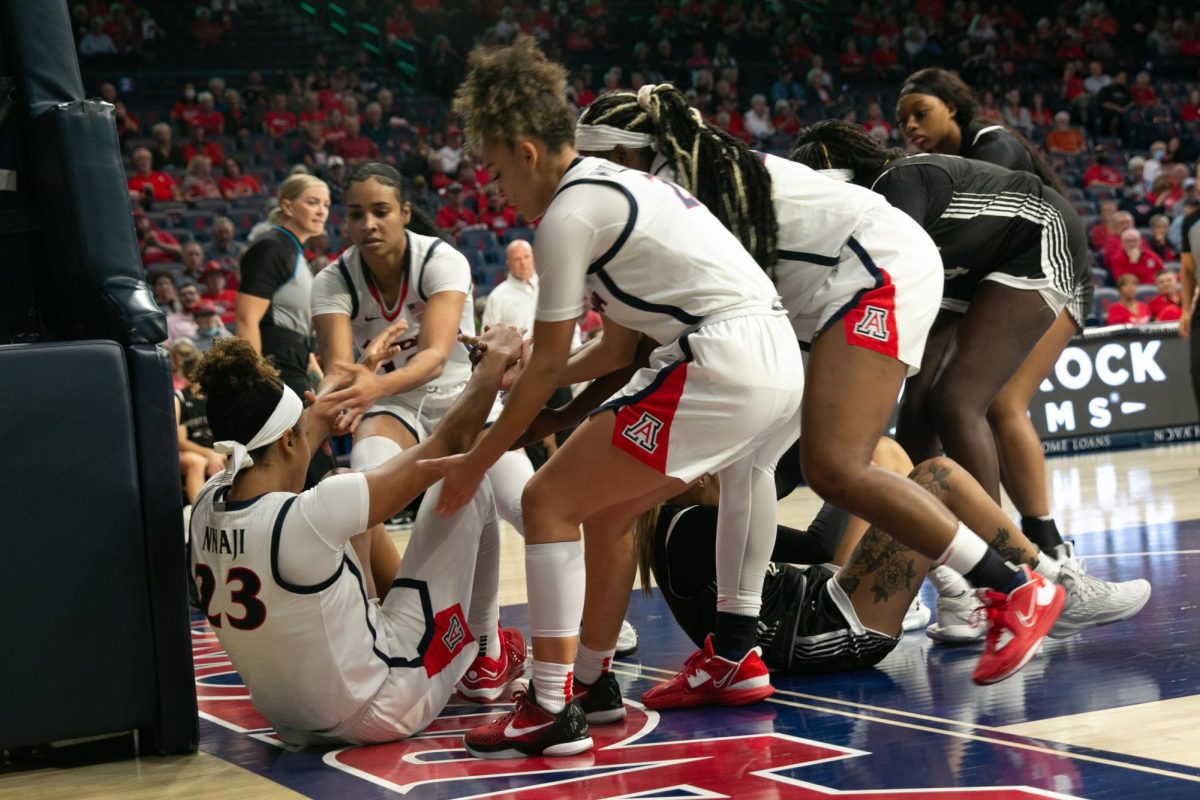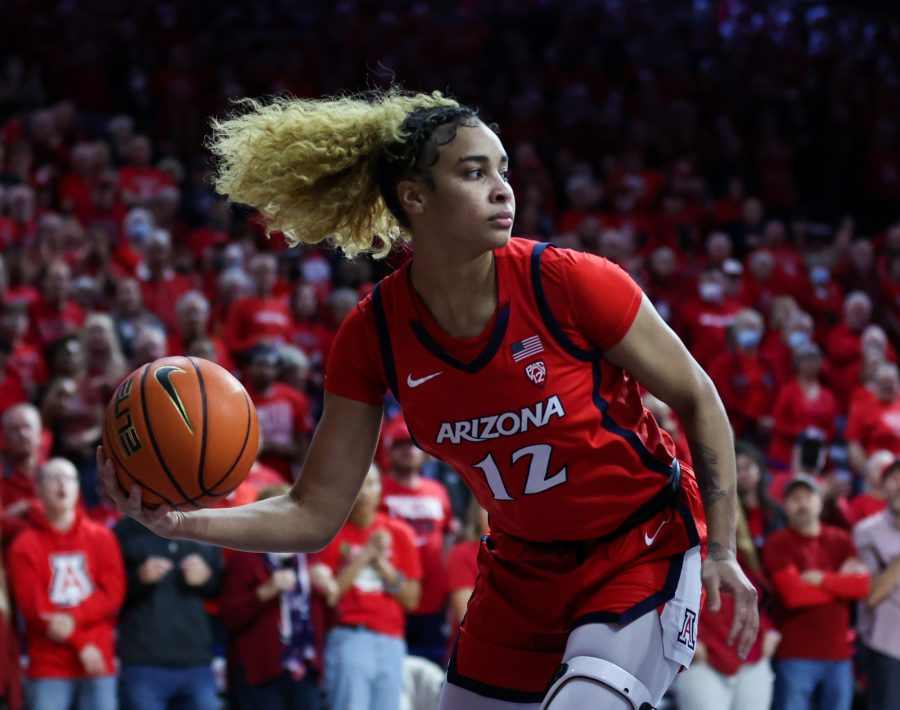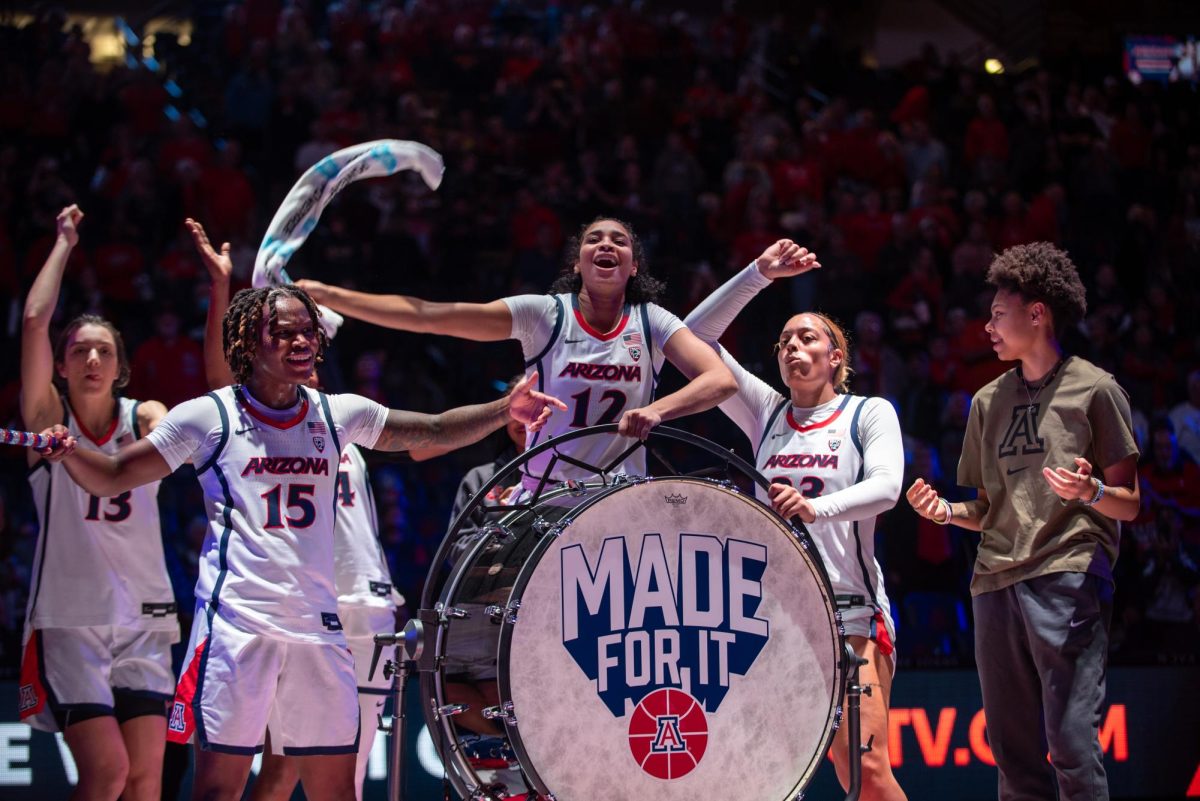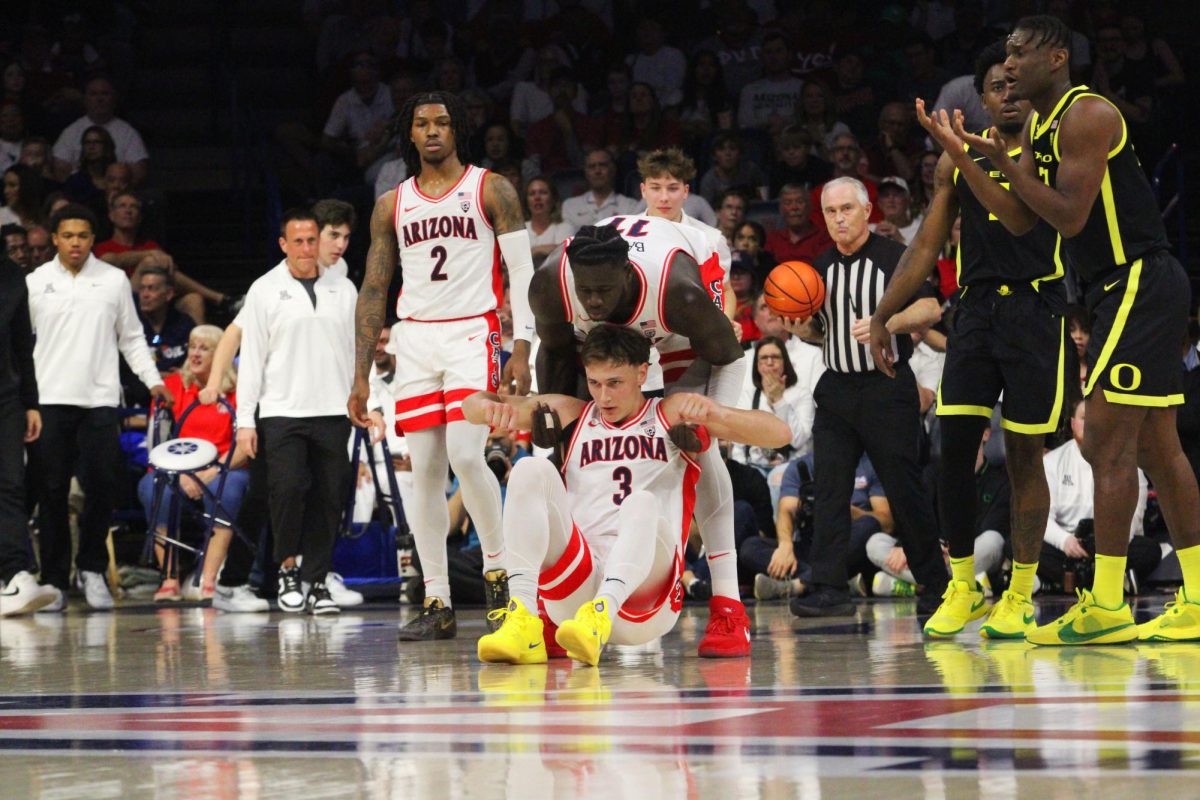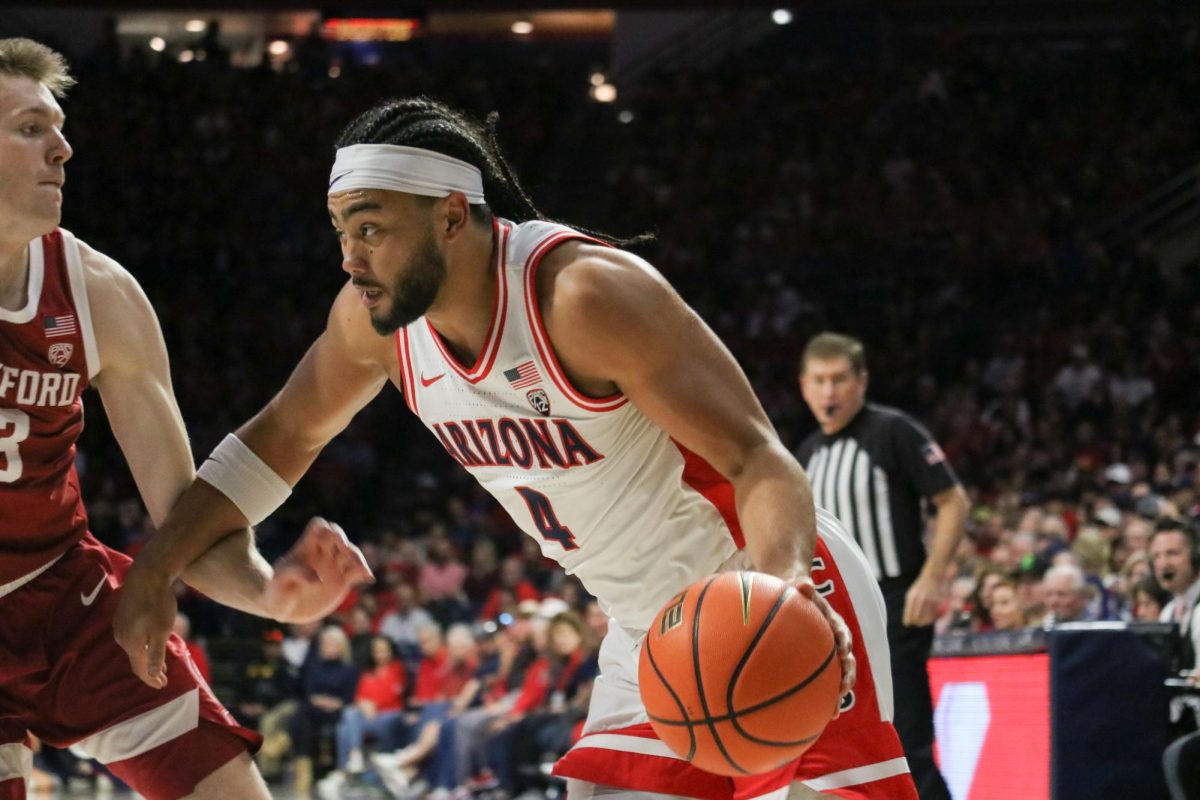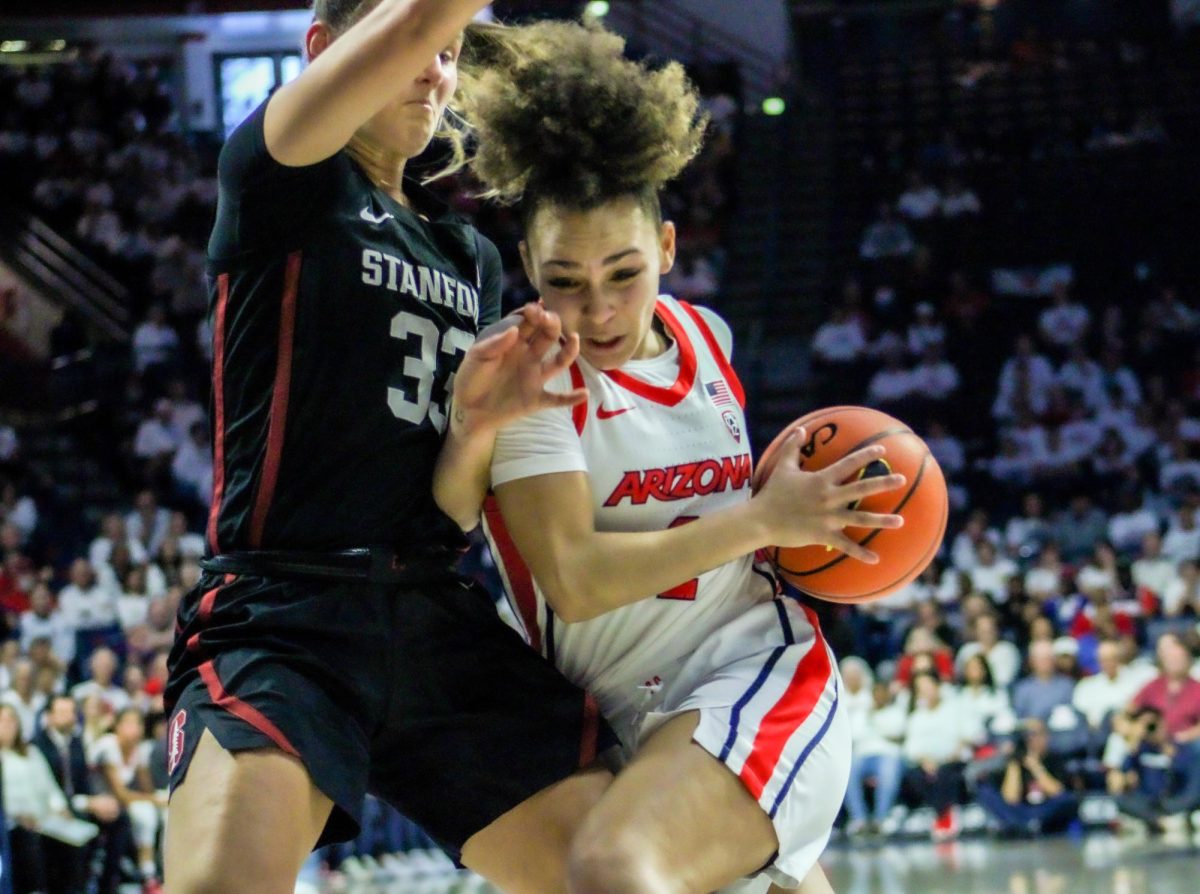When Kentucky guard John Wall stood in front of television cameras two weeks ago and let a comment slip about his displeasure at head coach John Calipari’s criticisms, he came across as a selfish player going through the motions of college hoops and waiting for his entry into the NBA Draft.
It was the speed of information, the relentless media pressure that caught his reaction. That need for speed caused an uproar at Kentucky, so why would it be different at Arizona, where the majority of the players use Twitter and Facebook?
“”The speed of information is really what’s changed college basketball,”” UA men’s basketball head coach Sean Miller said in reaction to Wall’s comments. “”When you look at high school games being on ESPN in front of a national television audience, when you see what Twitter is today, e-mail, text messaging … The way they can communicate, it puts them that much more in the spotlight at such an earlier age than ever before.””
The see-through screen of social media isn’t something for coaches to be afraid of.
In fact, the number of tech-savvy players has given fans a clearer glimpse of who college and even professional athletes truly are. Fading is the jock elitism, the misinformed assumption that all these athletes are as Wall appeared to be — selfish and only wading through the protocol to reach NBA-level wealth.
When asked of dealing with the new technology and protecting his players, Miller said simply that he has to adapt: “”It’s the way of the world.””
At Arizona, Miller’s five-man freshman class has created a Twitter-boom.
That’s not a bad thing.
Never before have fans been 140 typed characters away from conversation with their favorite player. Not before this year have fans gotten to know Arizona basketball players’ bowling scores posted as a cell phone picture or their favorite restaurants — just follow senior Nic Wise’s Twitter, and you’ll know he loves his sushi.
Such visibility caused problems for Wall and certainly could become problematic anywhere. Asked if he was worried about technology getting his players in trouble, Miller went back to his team’s character.
“”Inside of our locker room, it’s about one thing. It’s about winning,”” he said. “”It’s about a second thing, you know, doing it together. Those things don’t go away.””
Maybe Wall’s loose tongue was simply the natural reaction he had to Calipari’s criticism of the freshman guard’s play — frustration.
“”I love Coach Cal, he loves me and we’re just trying to get everything down pat,”” Wall told The Courier-Journal of Louisville, Kent., a day after he raised eyebrows. “”We’re cool where we’re at.””
Originally, Wall went on television and said what he thought. It was his natural reaction, and, taking into account the context of his team’s upset loss to South Carolina, he had a right to be frustrated. His reaction was a glimpse of who John Wall is: Perhaps someone a little off the wall.
“”With that, there’s going to be those episodes that I think everyone should almost understand because of how young these kids are,”” Miller said of Wall.
He’s right.
Social media also spread a humorous dance by Wall, aptly titled “”The John Wall Dance.”” There’s even a Youtube video of a man doing “”The John Wall Dance”” while standing over a deer in celebration of his successful hunt.
At Arizona, freshman Kevin Parrom’s infamous foul on ASU guard Ty Abbott spread like wildfire when Parrom posted his namesake, “”No easy buckets”” post on Twitter. That saying could be seen among the Zona Zoo posters during this weekend’s games.
In college, visibility has kept the human side of athletes available to the public. While that might include 18-year-olds, the openness is something that should be cherished.
When one-time Arizona basketball commitment and NBA rookie Brandon Jennings tweeted a positive, “”good game guys”” post after his Milwaukee Bucks earned a victory back in December, he was fined $7,500 for disobeying an NBA social media rule. He had tweeted immediately after a game, before doing media interviews.
Forget the firewalls.
Twitter, Facebook, Youtube, Ustream, even television — these things might cause problems for programs with iffy-character guys.
But hopefully the NCAA and its programs won’t freak over the advantages that technology provides.
It’s nice to know athletes make mistakes. They’re human.
It’s also welcoming to know they’re beatable in the bowling alley.
— Kevin Zimmerman is a journalism junior. He can be reachd at sports@wildcat.arizona.edu.



